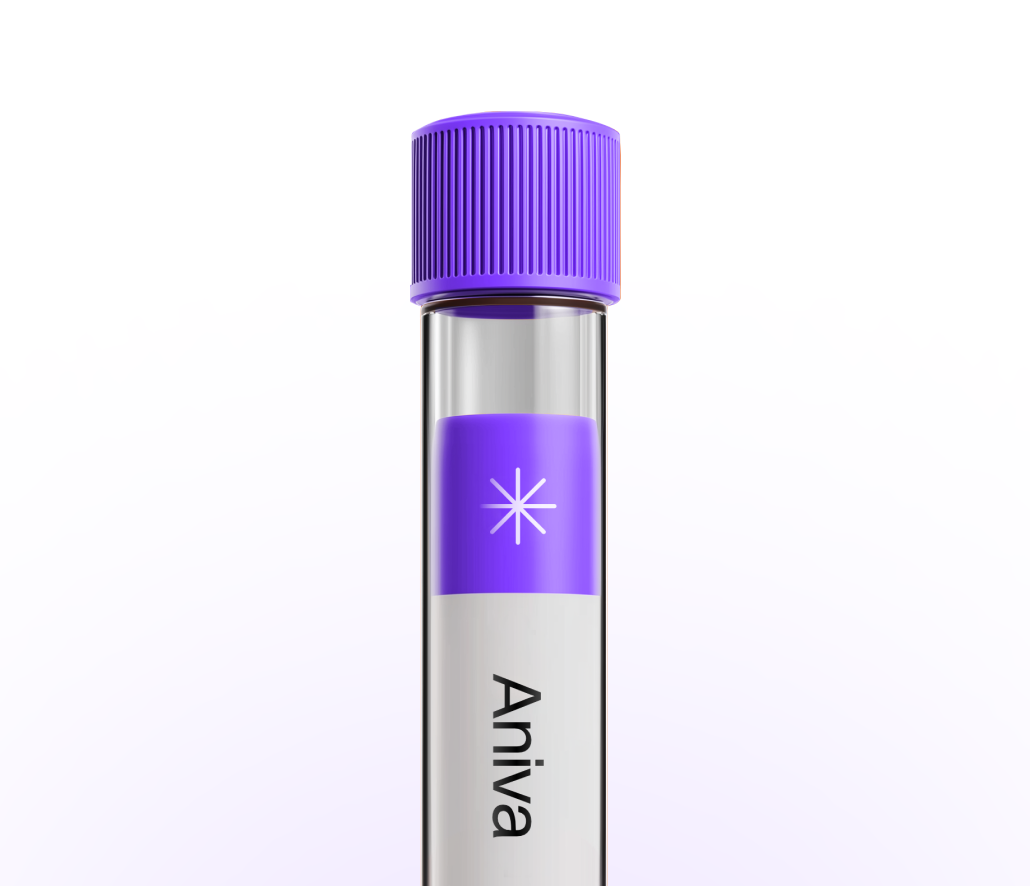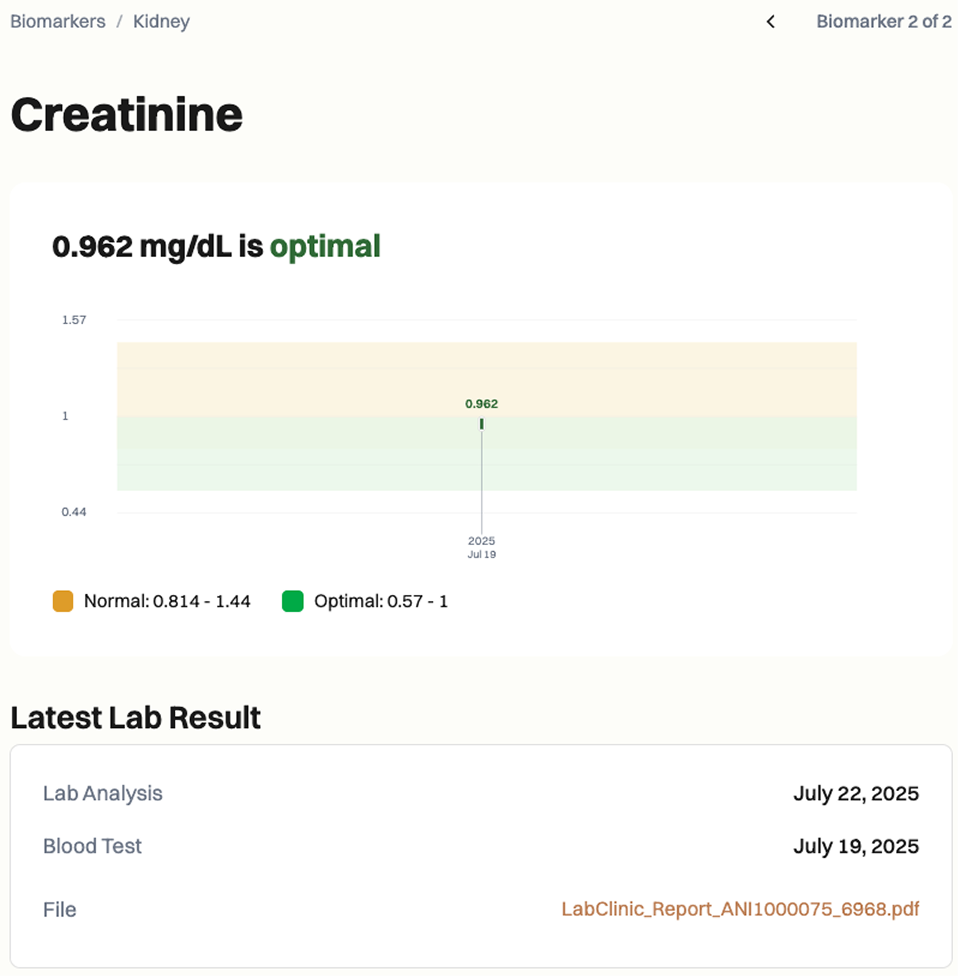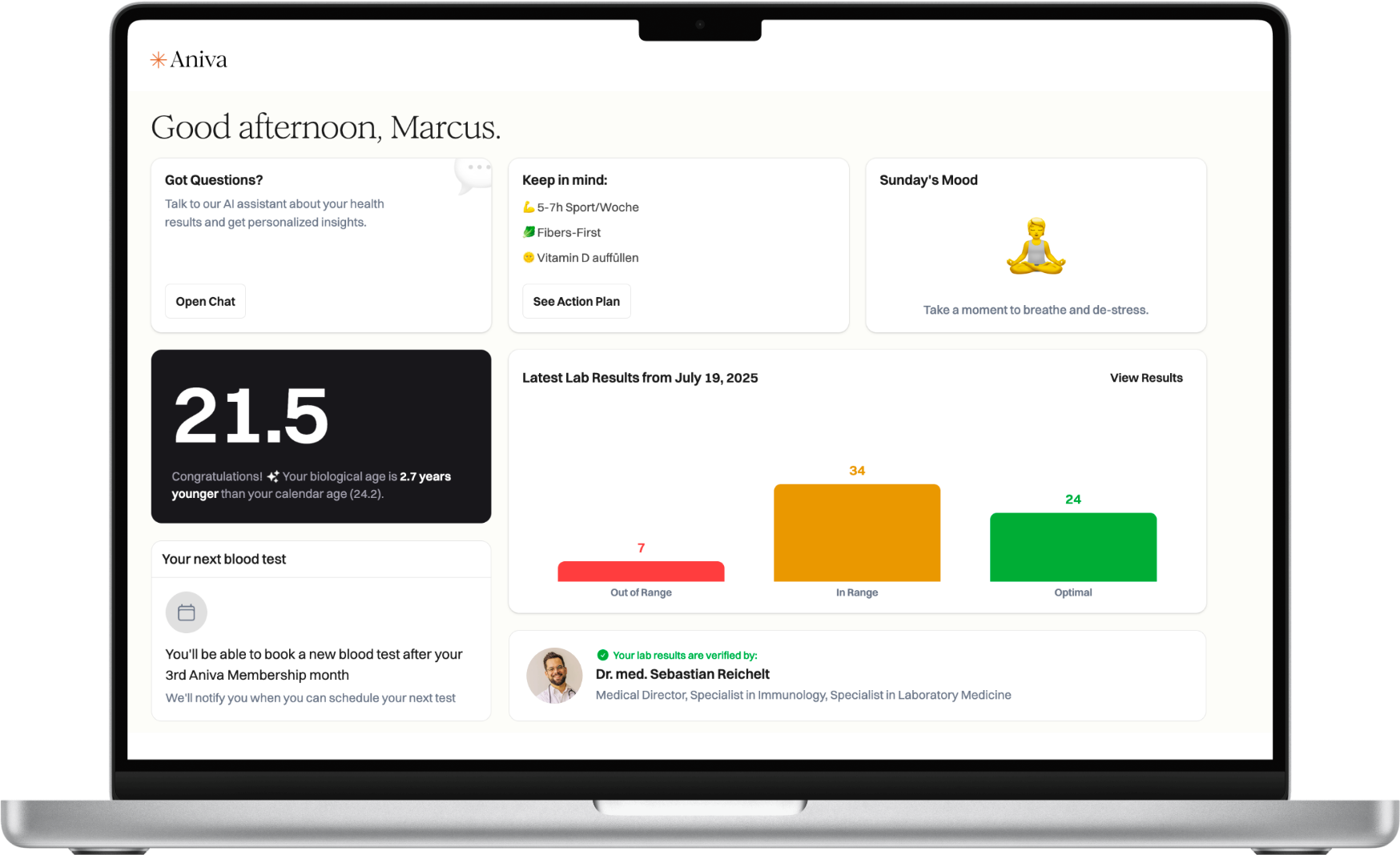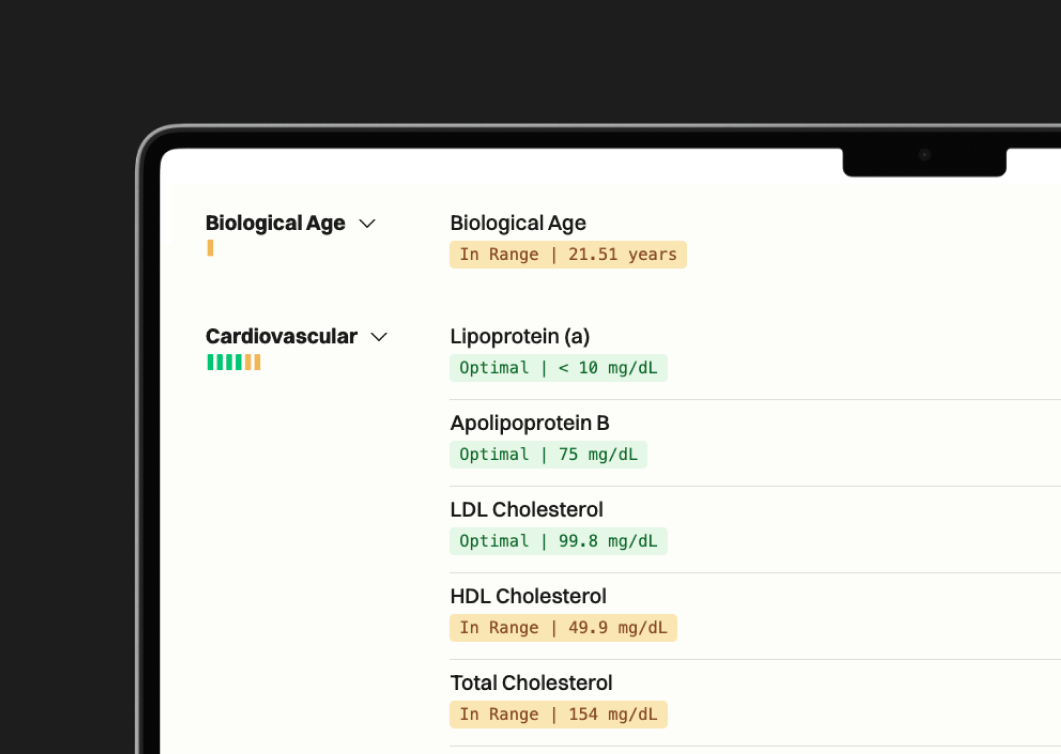A simple ratio comparing triglycerides to HDL cholesterol, adding context to heart and metabolic health.
Securely stored in EU
Cancel anytime
Test 100+ biomarkers

Less than 5 minutes waiting time. One
simple test at one of our 20+ locations.
Get your lab reports within one week.
Accessible on our app and per PDF.
All your health records stored
in a single, convenient place.

Clinicians sometimes review the triglyceride/HDL ratio to see the balance between blood fats and protective HDL. A higher ratio can hint at insulin resistance or a more atherogenic pattern, guiding whether closer follow-up or lifestyle focus may help. It adds context alongside standard lipids and risk scores, but does not replace guideline markers. You can test this marker with Aniva across Germany and Finland.
Clinicians sometimes review the triglyceride/HDL ratio to see the balance between blood fats and protective HDL. A higher ratio can hint at insulin resistance or a more atherogenic pattern, guiding whether closer follow-up or lifestyle focus may help. It adds context alongside standard lipids and risk scores, but does not replace guideline markers. You can test this marker with Aniva across Germany and Finland.
High: May suggest insulin resistance, higher triglyceride-rich particles, or a more atherogenic lipid pattern. Consider repeat testing after fasting, and review alcohol and refined carbohydrate intake. Discuss with a clinician; they may check non-HDL cholesterol, apolipoprotein B, or glucose markers.
Low: Often reflects a favorable lipid balance. Keep heart-healthy habits and interpret together with your full lipid profile and overall risk.



Common factors that can skew results include recent sugary or fatty meals, alcohol within 24 hours, strenuous exercise, dehydration, acute illness, pregnancy, and smoking. Medicines and supplements that affect triglycerides or HDL (for example statins, fibrates, niacin, omega-3s, estrogen or androgen therapy, corticosteroids, and isotretinoin) can also shift this ratio. Try to use the same lab and similar timing for repeat tests.
Special situations include very high triglycerides, recent major illness or surgery, or pregnancy; confirm with a fasting lipid panel and review with your clinician.
What does the triglyceride/HDL ratio show? It compares triglycerides to protective HDL. Higher results may point toward insulin resistance or a more atherogenic pattern.
Are there standard cutoffs? No. This measure is not guideline-endorsed; no standardized cutoffs. Interpret with your full lipid panel and overall risk.
Do I need to fast? Fasting is not required for most people. If triglycerides are high or variable, your clinician may repeat a fasting lipid panel.
What can affect my result? Recent sugary or fatty meals, alcohol, hard exercise, illness, pregnancy, dehydration, and some medicines can change triglycerides or HDL.
How often should I test? Many people check lipids yearly or as advised. Recheck sooner after lifestyle changes or if results shift unexpectedly.
How long do results take? Most labs return results within 1–3 business days. Your report will show both triglycerides and HDL used to calculate the ratio.



One annual blood test (100+ biomarkers)
Clinician-reviewed insights
Personalized action plan
Access to our AI Concierge
Access to curated products


63%
44%
70%